Ford Explorer EV vs Land Rover Range Rover – Differences & prices compared
Everyday use, family trips or long-distance drives – here’s where the differences show.
Discover whether Ford Explorer EV or Land Rover Range Rover fits your lifestyle better.
Costs and Efficiency:
When it comes to price and running costs, the biggest differences usually appear. This is often where you see which car fits your budget better in the long run.
Ford Explorer EV has a significantly advantage in terms of price – it starts at 34200 £, while the Land Rover Range Rover costs 122700 £. That’s a price difference of around 88542 £.
As for range, the Ford Explorer EV performs decisively better – achieving up to 602 km, about 485 km more than the Land Rover Range Rover.
Engine and Performance:
Under the bonnet, it becomes clear which model is tuned for sportiness and which one takes the lead when you hit the accelerator.
When it comes to engine power, the Land Rover Range Rover has a significantly edge – offering 615 HP compared to 340 HP. That’s roughly 275 HP more horsepower.
In acceleration from 0 to 100 km/h, the Land Rover Range Rover is a bit quicker – completing the sprint in 4.50 s, while the Ford Explorer EV takes 5.30 s. That’s about 0.80 s faster.
In terms of top speed, the Land Rover Range Rover performs clearly perceptible better – reaching 261 km/h, while the Ford Explorer EV tops out at 180 km/h. The difference is around 81 km/h.
There’s also a difference in torque: Land Rover Range Rover pulls slightly stronger with 800 Nm compared to 679 Nm. That’s about 121 Nm difference.
Space and Everyday Use:
Whether family car or daily driver – which one offers more room, flexibility and comfort?
Seats: Land Rover Range Rover offers distinct more seating capacity – 7 vs 5.
In curb weight, Ford Explorer EV is distinct lighter – 1908 kg compared to 2504 kg. The difference is around 596 kg.
In terms of boot space, the Land Rover Range Rover offers decisively more room – 818 L compared to 450 L. That’s a difference of about 368 L.
In maximum load capacity, the Land Rover Range Rover performs clearly perceptible better – up to 2176 L, which is about 754 L more than the Ford Explorer EV.
When it comes to payload, Land Rover Range Rover distinct takes the win – 846 kg compared to 585 kg. That’s a difference of about 261 kg.
Who wins the race?
The Ford Explorer EV proves to be is largely superior and therefore becomes our DriveDuel Champion!
Ford Explorer EV is the better all-rounder in this comparison.
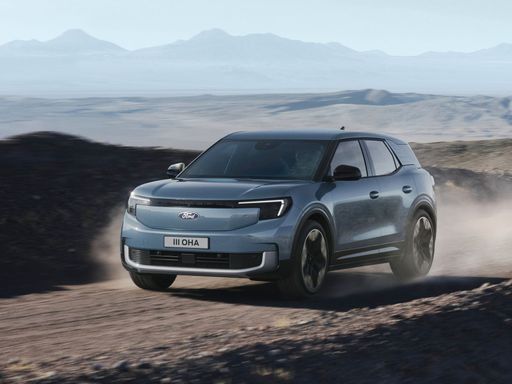
Ford Explorer EV
Ford Explorer EV
The Ford Explorer EV marks a significant step forward in the brand's journey towards electrification, offering an impressive blend of performance and sustainability. This modern SUV features a sleek design complemented by advanced technology that enhances the driving experience. With a focus on comfort and innovation, the Explorer EV aims to redefine family travel for the electric age.
details @ electricexplorer.fordpresskits.com
@ electricexplorer.fordpresskits.com
 @ electricexplorer.fordpresskits.com
@ electricexplorer.fordpresskits.com
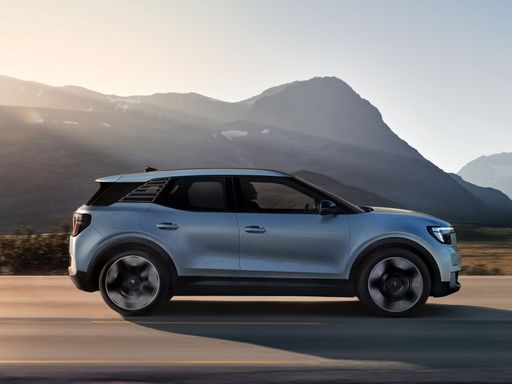 @ electricexplorer.fordpresskits.com
@ electricexplorer.fordpresskits.com
Land Rover Range Rover
The Land Rover Range Rover epitomises luxury and capability in the realms of off-road vehicles. Its elegant design seamlessly marries sophistication with ruggedness, making it equally suitable for urban environments and challenging terrains. Inside, passengers are treated to a plush interior with premium materials and cutting-edge technology that ensure a comfortable and connected driving experience.
details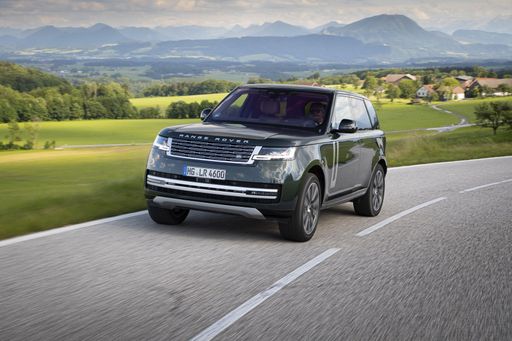 @ media.landrover.com
@ media.landrover.com
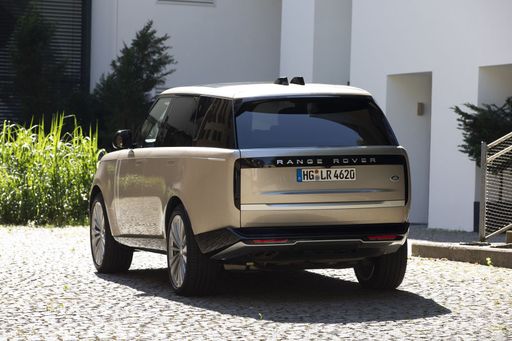 @ media.landrover.com
@ media.landrover.com
 @ media.landrover.com
@ media.landrover.com
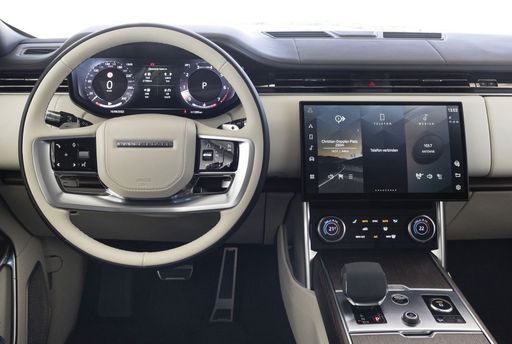 @ media.landrover.com
@ media.landrover.com

|

|
|
|
|
Costs and Consumption |
|
|---|---|
|
Price
34200 - 48800 £
|
Price
122700 - 244700 £
|
|
Consumption L/100km
-
|
Consumption L/100km
2.7 - 11.7 L
|
|
Consumption kWh/100km
14.5 - 17.2 kWh
|
Consumption kWh/100km
-
|
|
Electric Range
360 - 602 km
|
Electric Range
116 - 117 km
|
|
Battery Capacity
52 - 79 kWh
|
Battery Capacity
31.80 kWh
|
|
co2
0 g/km
|
co2
62 - 265 g/km
|
|
Fuel tank capacity
-
|
Fuel tank capacity
71 - 90 L
|
Dimensions and Body |
|
|---|---|
|
Body Type
SUV
|
Body Type
Off-Roader
|
|
Seats
5
|
Seats
5 - 7
|
|
Doors
5
|
Doors
5
|
|
Curb weight
1908 - 2179 kg
|
Curb weight
2504 - 2810 kg
|
|
Trunk capacity
445 - 450 L
|
Trunk capacity
212 - 818 L
|
|
Length
4468 mm
|
Length
5052 - 5258 mm
|
|
Width
1871 mm
|
Width
2047 mm
|
|
Height
1630 - 1639 mm
|
Height
1870 mm
|
|
Max trunk capacity
1417 - 1422 L
|
Max trunk capacity
1841 - 2176 L
|
|
Payload
561 - 585 kg
|
Payload
589 - 846 kg
|
Engine and Performance |
|
|---|---|
|
Engine Type
Electric
|
Engine Type
Plugin Hybrid, Petrol MHEV, Diesel MHEV
|
|
Transmission
Automatic
|
Transmission
Automatic
|
|
Transmission Detail
Reduction Gearbox
|
Transmission Detail
Automatic Gearbox
|
|
Drive Type
Rear-Wheel Drive, All-Wheel Drive
|
Drive Type
All-Wheel Drive
|
|
Power HP
170 - 340 HP
|
Power HP
300 - 615 HP
|
|
Acceleration 0-100km/h
5.3 - 8.7 s
|
Acceleration 0-100km/h
4.5 - 6.6 s
|
|
Max Speed
160 - 180 km/h
|
Max Speed
218 - 261 km/h
|
|
Torque
310 - 679 Nm
|
Torque
650 - 800 Nm
|
|
Number of Cylinders
-
|
Number of Cylinders
6 - 8
|
|
Power kW
125 - 250 kW
|
Power kW
221 - 452 kW
|
|
Engine capacity
-
|
Engine capacity
2997 - 4395 cm3
|
General |
|
|---|---|
|
Model Year
2024 - 2025
|
Model Year
2025
|
|
CO2 Efficiency Class
A
|
CO2 Efficiency Class
B, G
|
|
Brand
Ford
|
Brand
Land Rover
|
What drive types are available for the Ford Explorer EV?
The Ford Explorer EV is available as Rear-Wheel Drive or All-Wheel Drive.
The prices and data displayed are estimates based on German list prices and may vary by country. This information is not legally binding.
